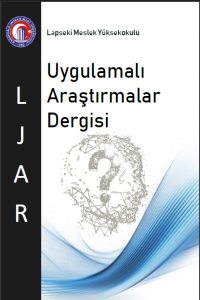Pektin/p(HEMA-ko-AAc) Hidrojellerine Gömülü Gümüş Nanopartiküllerin Yeşil Sentez Yöntemi olarak Parthenocissus quinquefolia L. Bitki Özütü ile Üretilmesi
Pektin/p(HEMA-ko-AAc)/AgNP nanokompozit hidrojeller basit, uygun maliyetli ve çevre dostu bir işlemle geliştirilmiştir. İlk olarak pektin/p(HEMA-ko-AAc) hidrojeller, aşılama omurgası olarak pektin, 2-hidroksietil metakrilat ve akrilik asit (HEMA ve AAc) monomerleri, N,N'- metilenbisakrilamid (MBA) çapraz bağlayıcısı ve amonyum persülfat (APS) - N,N,N',N'-tetrametil etilendiamin (TEMED) redoks başlatıcı çifti ile serbest radikal polimerizasyonu yoluyla sentezlendi. Pektin/p(HEMA-ko-AAc) hidrojellerinin kimyasal yapısı Fourier dönüşümü kızılötesi spektroskopisi (FTIR) ve yüzey özellikleri taramalı elektron mikroskobu (SEM) ile aydınlatıldı. Daha sonra, gümüş iyonları hidrojel matrisine dahil edildi ve gümüş nanopartiküller, Parthenocissus Quinquefolia L yaprak özütü kullanılarak gümüş iyonlarının (Ag+) yerinde indirgenmesiyle pektin/p(HEMA-ko-AAc)/AgNP nanokompozit hidrojeli geliştirildi. Hazırlanan nanokompozit hidrojeli geçirimli elektron mikroskobu (TEM) ile karakterize edilerek AgNP’lerin boyutu belirlendi. Son olarak, elde edilen nanokompozit hidrojellerin antimikrobiyal aktivitesi Bacillus Cereus (gram-pozitif) ve Escherichia Coli (gram-negatif) bakteri türleri üzerine yapılırken, antifungus etkisi ise Candida albicans fungusu üzerine disk difüzyon yöntemi kullanılarak yapılmıştır.
Anahtar Kelimeler:
Hidrojel, Gümüş Nanopartiküller, Parthenocissus Quinquefolia L, Yeşil Sentez
Production of Silver Nanoparticles Embedded in Pectin/p(HEMA-co-AAc) Hydrogels with Parthenocissus Quinquefolia L Plant Extracts as a Green Synthesis Method
Pectin/p(HEMA-co-AAc)/AgNP nanocomposite hydrogels were developed with a simple, cost-effective and environmentally friendly process. First, pectin/p(HEMA-co-AAc) hydrogels was synthesized with pectin as grafting backbone, 2-hydroxyethyl methacrylate and acrylic acid (HEMA and AAc) monomers, N,N'-methylenebisacrylamide (MBA) crosslinker and ammonium persulfate (APS) - N,N,N',N '-tetramethyl ethylenediamine (TEMED) a redox initiator pair by free radical polymerization. The chemical structure and surface properties of pectin/p(HEMA-co-AAc) hydrogels were elucidated by Fourier transform infrared spectroscopy (FTIR) and scanning electron microscopy (SEM). Next, silver ions were incorporated into the hydrogel matrix and pectin/p(HEMA-co-AAc)/AgNP nanocomposite hydrogel was developed by in situ reduction of silver ions (Ag+) to silver nanoparticles using Parthenocissus Quinquefolia L leaf extract. The size of AgNPs of nanocomposite hydrogels were determined by characterizing with a transmission electron microscope (TEM). Finally, the antimicrobial and antifungal activities of the obtained nanocomposite hydrogels was performed by disk diffusion method using Bacillus Cereus (gram-positive), Escherichia Coli (gram-negative), bacterial species and Candida albicans as fungal species.
___
- Ali, W., Gebert, B., Altinpinar, S., Mayer-Gall, T., Ulbricht, M., Gutmann, J.S., Graf, K., 2018. On the potential of using dual-function hydrogels for brackish water desalination. Polymers, 10 (6): 567.
- Yayın Aralığı: Yılda 2 Sayı
- Başlangıç: 2020
- Yayıncı: Çanakkale Onsekiz Mart Üniversitesi
Sayıdaki Diğer Makaleler
Akçagül 77 Yeni Elma Çeşidi’nin Pomolojik Özelliklerinin Belirlenmesi
İklim Değişikliğinin Kentlerdeki Yansıması Bağlamında Edirne Kent Merkezinin Mevcut Durumu
Sümeyye BAŞ, Çiğdem KAPTAN AYHAN
Canan ÖZTOKAT KUZUCU, Hatice Nihan ÇİFTCİ
BİLGİSAYAR TEKNOLOJİLERİ ALANI ÖZELİNDE MESLEKİ TEKNİK EĞİTİMDE MYK UYUMLULUK DURUMUNUN İNCELENMESİ
Mehmet Rıza KIVANÇ, Alper ÖNDER, Ferah CÖMERT ÖNDER, Pınar ILGIN
